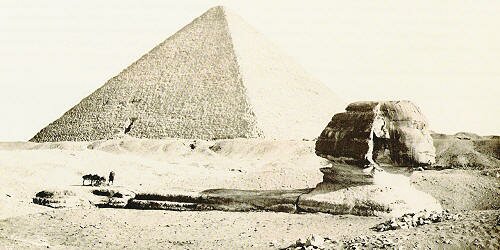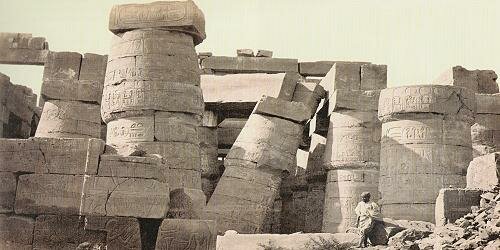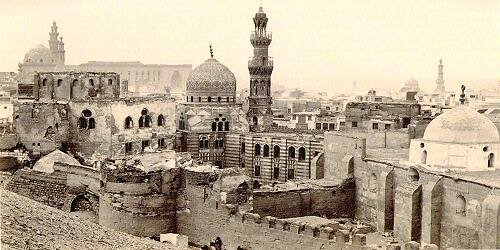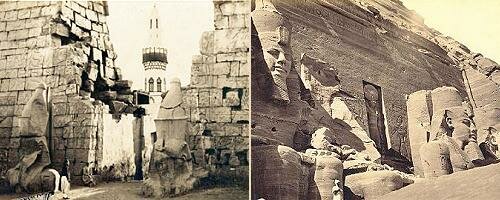|
|
|||||||||||||||
|
|
Topics in this section: david roberts | francis frith Francis Frith
Francis Frith, Victorian founder of the world-famous photographic archive, was a complex and multitudinous man. A devout Quaker and a highly successful Victorian businessman, he was both philosophic by nature and pioneering in outlook. By 1855 Francis Frith had already established a wholesale grocery business in Liverpool, and sold it for the astonishing sum of £200,000, which is the equivalent today of over £15,000,000. As a multi-millionaire, he was able to indulge his passion for travel. Now in his thirties, and captivated by the new science of photography, Frith began a pioneering series of trips to Egypt that lasted from 1857 until 1860, and was one of the first photographers to penetrate so far up the Nile - he reached the sixth cataract, although photographs only exist of monuments as far south as the second cataract. His images were widely seen in a vast array of publications, and he lectured extensively on his work. He published an essay entitled "The art of photography" in the Art Journal of 1859, in which he declares that it is the truthfulness of the photograph that makes it so important. When Francis Frith arrived in Alexandria in 1857 to trace the course of the Nile southwards, he was following in the footsteps of many illustrious earlier travellers, including the renowned Scottish artist David Roberts.
Frith put his first collection of photographs on the market between 1858 and 1860. 76 prints were published in twenty five parts, collected under the title "Egypt and Palestine - photographed by Francis Frith". In this early volume, Frith wrote the descriptions himself and the images were largely of Upper Egypt in the areas of Luxor, Aswan and Nubia, and also of Nazareth, Baalbec and Jerusalem. In 1860 a new set of photographs was published - the Egyptian images were nearly all of Cairo and the pyramids, with some sites in the Sinai. For this production, descriptions were written by a Sophia Poole and her son Reginald. She had spent seven years in Egypt and had published a book "An Englishwoman in Egypt", while her son Reginald became keeper of coins and medals at the British Museum.
Artistic acclaim arrived in 1861 when Frith's stereoscopic prints won a medal at that year's Great Exhibition. In 1862 Frith published a volume of the stereo images of Egypt with the rather lengthy title of "Egypt, Nubia and Ethiopia: illustrated by one hundred stereoscopic photographs taken by Francis Frith for Messrs Negretti and Zambra, with descriptions and numerous wood engravings by Joseph Bonomi and notes by Samual Sharpe."
To follow in the footsteps of Francis Frith's journey through Egypt is not difficult, although many of the temples in the far south now lie in the Sudan, and are not so easily accessible. The considerable journey that he undertook is even more remarkable given the fact that he was working in extremely hot temperatures, with volatile chemicals and no modern lightweight clothing, transporting his huge cameras and living in basic tents.
Pioneering photographic expedition The fascinating photos from Francis Frith's Egyptian travels have now been collated into a book, "Francis Frith's Egypt and the Holy Land" published by the Francis Frith collection. Here are his remarkable photographs, some of the earliest images ever taken of the bible lands and the Nile regions of Egypt, together with his own intriguing account of his adventures - including hair-raising encounters with bandits and exotic Bedouin chiefs! Included are a number of Frith's own written descriptive notes to his photos, offering a unique insight into the monuments and antiquities, revealing them as they were before 20th century tourism altered them forever. Purchase the book here for just £24.99.
For more recommended reading titles click here >>
|
||||||||||||||

|
|||||||||||||||
|
|||||||||||||||




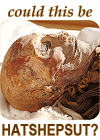
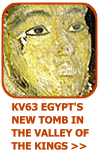
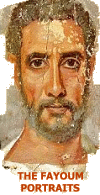
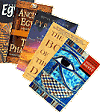
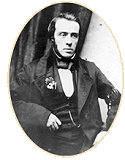 Francis Frith is one of the pioneers of photography - his early fame largely rested on his photographic images of Egypt and the Holy Land. He was one of the first to develop the photographic postcard, which derived from the Victorian passion for the "carte de visite".
Francis Frith is one of the pioneers of photography - his early fame largely rested on his photographic images of Egypt and the Holy Land. He was one of the first to develop the photographic postcard, which derived from the Victorian passion for the "carte de visite".